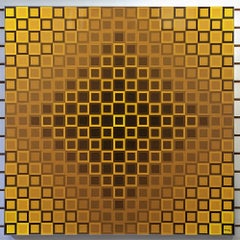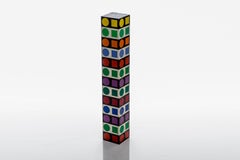Vasarely Luran
1970s Op Art Abstract Prints
Mixed Media
Recent Sales
Late 20th Century Abstract Mixed Media
Wood
People Also Browsed
Vintage 1940s French Art Deco Desks and Writing Tables
Brass
2010s Italian Art Deco Table Lamps
Brass
Vintage 1920s French Art Nouveau Glass
Art Glass
Vintage 1950s French Vases
Ceramic
2010s British Cabinets
Copper
20th Century Chinese Chinese Export Vases
Porcelain
Antique 18th Century Peruvian Spanish Colonial Cabinets
Mother-of-Pearl, Teak
Vintage 1960s American Mid-Century Modern Cabinets
Resin
Antique 17th Century Japanese Japonisme Paintings and Screens
Brass
21st Century and Contemporary Contemporary Figurative Prints
Etching
21st Century and Contemporary Contemporary Figurative Prints
Etching
Antique 1890s Japanese Meiji Paintings and Screens
Gold Leaf
1970s Op Art Abstract Prints
Screen
20th Century French Floor Lamps
Crystal
Antique 19th Century Russian Pedestals
Malachite, Ormolu
Antique Late 19th Century American Directoire Center Tables
Bone, Wood
Victor Vasarely for sale on 1stDibs
Widely considered the grandfather of Op art, the French-Hungarian painter Victor Vasarely (1906–97) created eye-popping geometric abstractions that play with the viewer’s perception of depth, perspective and motion. A classic example is the 1937 Zebra, which consists of undulating black and white stripes that suggest the form of the titular animal through optical trickery. The work is often credited as the earliest Op art painting.
Such illusions were more than pleasing tricks for Vasarely, who insisted that “pure form and pure color can signify the world.” He wanted to “democratize” art by producing works in large editions at reasonable prices that were understandable across national and cultural boundaries. In the 1960s, he developed an alphabet plastique, or fine art alphabet, consisting of elementary visual building blocks that could be used in endless combinations to create original compositions. By employing this universal visual vocabulary and stripping away topical references, he sought to create what he called a “Planetary Folklore.”
Embodying Vasarely’s singular belief that art should serve a social function, accessible to all, these innovations may perhaps be his greatest contribution to 20th-century art.
Find a collection of Victor Vasarely prints, paintings, sculptures and other art on 1stDibs.

